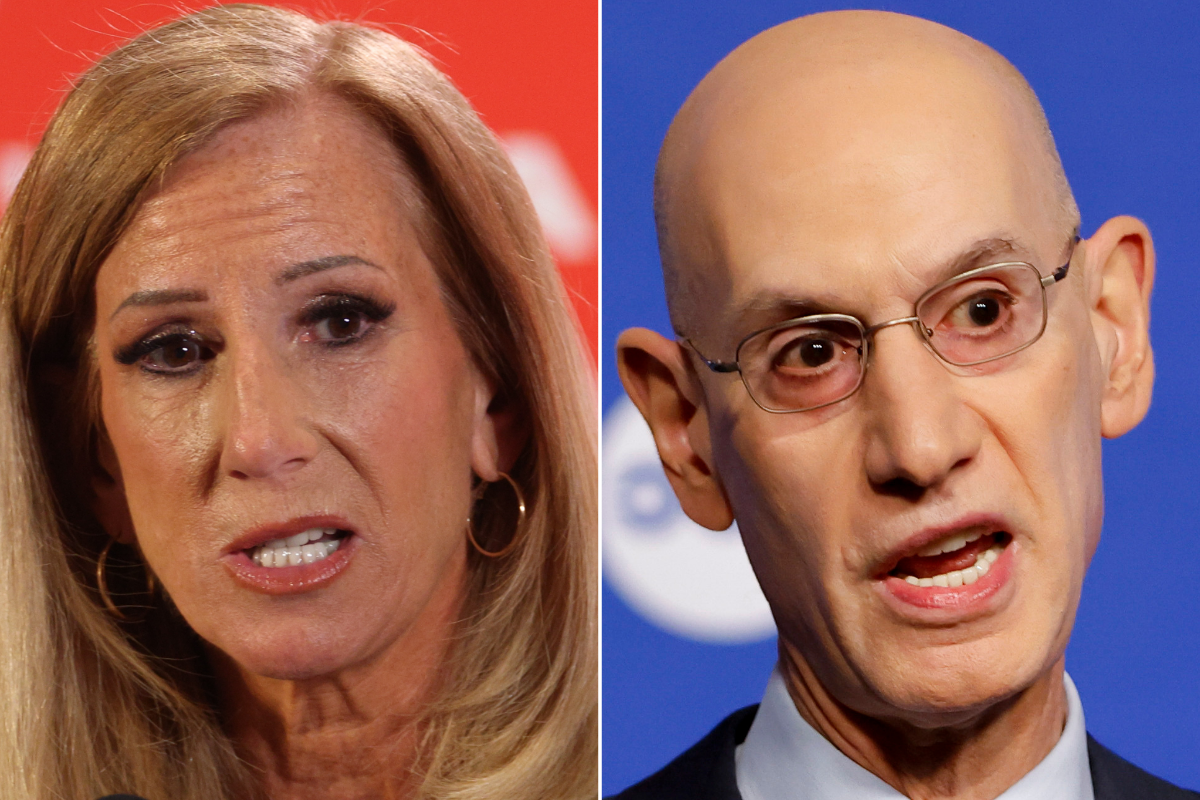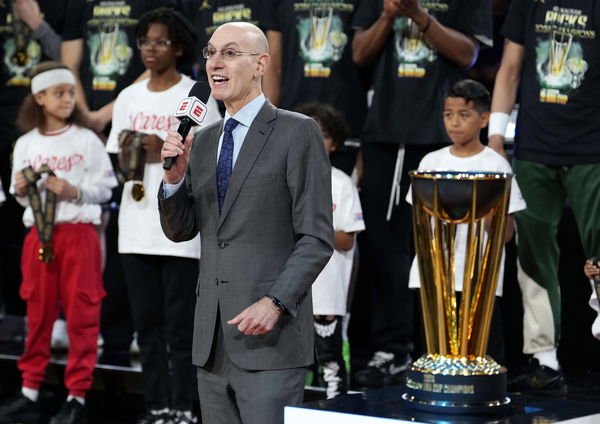
Imago
credit- Imagn

Imago
credit- Imagn
The 2025 WNBA season exploded on the scene with all the flair and chaos that is expected from a rising league. From jaw-dropping orange carpet moments, impressive rookies in Paige Bueckers and Sonia Citron, to controversies surrounding the officiating, the high-end drama exceeds the hardwood. While Commissioner Cathy Engelbert’s grip on the league has been tested this regular season, let us explore how Adam Silver has been withholding his league.
Watch What’s Trending Now!
Meanwhile, across the hardwood in the NBA, the future has already begun to roar. The 2025 Draft recently crowned electrifying talents like Cooper Flagg and Julian Reese, in a bid to rattle the foundations of the men’s game. But it’s not just rookies rewriting the script; both leagues have been revolutionizing the season itself.
The stakes are high as the WNBA inches closer to the Commissioner’s Cup and the NBA gears up for a bold and exciting Emirates Cup. These in-season tournaments are rewriting the basketball playbook by injecting fresh fire and fierce competition into what was once just a regular season. But how do they operate? Do these glamorous showdowns carry lucrative gains for the players involved? Let us find out.
ADVERTISEMENT
Key Differences between WNBA and NBA In-Season Tournaments
The 2025 WNBA regular season marks the league’s fifth Commissioner’s Cup. This highly anticipated 36-game tournament runs parallel to the regular season games. Implemented in the year 2021, the women’s in-season tournament provided a blueprint for the NBA Cup. Two years later, the men’s league introduced its own in-season tournament.
While both leagues honor the best team with a trophy and a lucrative check, they follow a different structure. The W has designated regular-season games over a two-week block, mostly in June, where one team from the Eastern and Western Conference divisions, each, advances to the finals. It is a relatively simpler format with just one championship game with an integrated philanthropic cause, as each team dedicates additional funds to their chosen charitable organizations.
ADVERTISEMENT
Meanwhile, the NBA’s annual mid-season Cup is called the Emirates Cup since 2024. It has a complex arrangement that mimics a regular season. The Cup includes group stages, knockout rounds, and the most-anticipated finals. This initial elimination phase, also called the group stage, involves 30 teams that are split into 6 groups. Each group includes 5 teams based on their specific conference. The games begin in November, where all teams participate in a total of 4 group showdowns, with two away and two home games.
But only 6 teams from each conference progress to the knock-out stage. Two extra runner-up teams, also called the wild cards, join the teams in the next round. These eight teams face each other in their respective NBA arenas in the quarter-finals. But only four teams qualify for the semi-finals. Ultimately, two reigning teams lock horns in the finals. The final two stages are held at a neutral venue, in Las Vegas, each December.
ADVERTISEMENT
Prize Money Difference between WNBA and NBA In-Season Tournaments
According to SportingNews, the total prize pot for the Commissioner’s Cup is worth $500,000 cash prize, of which the players from the winning team earn $30,000 each, depending on the roster size. Meanwhile, a 12-player roster can earn upto $41,700 each. While the finalists are entitled to player bonuses, the finals MVP gets a chance to grab an extra prize worth $5,000.
Having said that, the efforts of the runners-up do not go in vain. They, too, earn between $10,000- $15,000 each. The Commissioner’s Cup is also a charity-based event, where teams earn donations per win or loss as well. The game helps players make more than what they earn during the regular games. No wonder Indiana Fever star, Caitlin Clark said, “It’s six times my WNBA salary, of course it matters. It’s a big deal.”
ADVERTISEMENT
The WNBA Commissioner’s Cup integrates a unique system of crypto payouts for distributing bonuses, supported by the Coinbase group. This increases the league’s market value and attracts various sponsors at the same time, encouraging digital currency and widening the W’s reach.
On the other hand, the NBA has a higher payout structure, which is meant to create more intrigue and boost audience and player engagement. From the quarter finalists to the NBA Cup champions, each player involved receives a set amount for their participation. Each player from the champion’s team receives $500,000, whereas the runner-up team earns a whopping $200,000 per player.

Imago
Dec 17, 2024; Las Vegas, Nevada, USA; NBA commissioner Adam Silver presents the trophy to the Milwaukee Bucks after they won the Emirates NBA Cup championship game against the Oklahoma City Thunder at T-Mobile Arena. Mandatory Credit: Kyle Terada-Imagn Images
There’s more, wait! The semi-finalists receive $100,000 each, whereas the quarter-finalists earn $50,000 per player. The league even provides financial incentives to key players. The tournament attracts massive media attention and offers significantly higher rewards per player. Like the WNBA, the league also includes player bonuses and offers extra prize money to the finals MVP candidate as well.
ADVERTISEMENT
Although the pay gap between the NBA and WNBA is quite stark, the hope is that in the not-so-distant future, pay parity can be achieved, especially with the rise of the WNBA as one of the top leagues in the US.
ADVERTISEMENT
ADVERTISEMENT
ADVERTISEMENT

